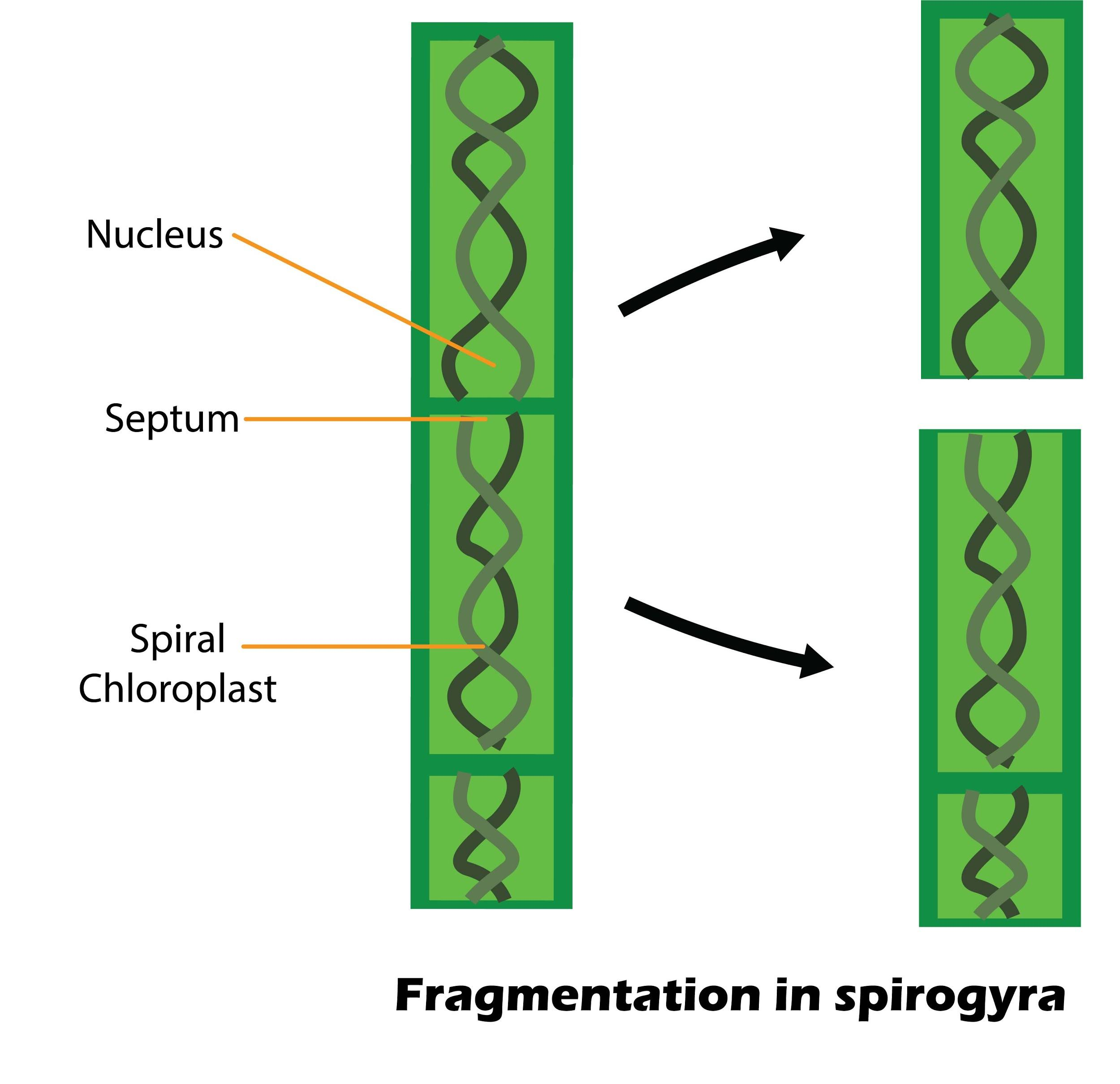
What will happen when Spirogyra filament attains considerable length?
Answer
498k+ views
1 likes
Hint: Matured filament helps in asexual reproduction in the spirogyra and the new organisms that are produced, are genetically and morphologically identical to the parent organism.
Complete answer:
Spirogyra reproduces asexually through a mechanism in which an organism splits at maturity simply in individual parts. Then these individual little pieces grow to form a new organism. This process can also help certain multicellular organisms with simple body organization to reproduce. When a mature spirogyra filament reaches a considerable length then mature spirogyra splits into two or more fragments. Then these fragments develop into an entire organism. This process of asexual reproduction is known as fragmentation.

Additional Information:
Spirogyra is a green alga found in freshwater environments such as rivers, lakes, and so forth. It is a free-floating organism. They are generally referred to with different names like pond silk and water silk. They have a vegetative structure that is filamentous and unbranched. About 400 species of Spirogyra are found. The genus Spirogyra takes its name from the unusual spiral chloroplast found in algae cells.
Spirogyra is a photosynthetic organism and contributes greatly to the complete fixation of carbon dioxide. They raise oxygen levels in their habitat. It feeds on many aquatic species.
Note: Fragmentation is a benefit for the organism itself because any part of the body will grow into a full organism. Second, it is simple and easy compared with other modes of reproduction. Its drawback is that the offspring produced are their parents' exact copies, with very low chances of variation.
Complete answer:
Spirogyra reproduces asexually through a mechanism in which an organism splits at maturity simply in individual parts. Then these individual little pieces grow to form a new organism. This process can also help certain multicellular organisms with simple body organization to reproduce. When a mature spirogyra filament reaches a considerable length then mature spirogyra splits into two or more fragments. Then these fragments develop into an entire organism. This process of asexual reproduction is known as fragmentation.

Additional Information:
Spirogyra is a green alga found in freshwater environments such as rivers, lakes, and so forth. It is a free-floating organism. They are generally referred to with different names like pond silk and water silk. They have a vegetative structure that is filamentous and unbranched. About 400 species of Spirogyra are found. The genus Spirogyra takes its name from the unusual spiral chloroplast found in algae cells.
Spirogyra is a photosynthetic organism and contributes greatly to the complete fixation of carbon dioxide. They raise oxygen levels in their habitat. It feeds on many aquatic species.
Note: Fragmentation is a benefit for the organism itself because any part of the body will grow into a full organism. Second, it is simple and easy compared with other modes of reproduction. Its drawback is that the offspring produced are their parents' exact copies, with very low chances of variation.
Latest Vedantu courses for you
Grade 11 Science PCM | CBSE | SCHOOL | English
CBSE (2025-26)
School Full course for CBSE students
₹41,848 per year
Recently Updated Pages
Master Class 9 General Knowledge: Engaging Questions & Answers for Success

Master Class 9 English: Engaging Questions & Answers for Success

Master Class 9 Science: Engaging Questions & Answers for Success

Master Class 9 Social Science: Engaging Questions & Answers for Success

Master Class 9 Maths: Engaging Questions & Answers for Success

Class 9 Question and Answer - Your Ultimate Solutions Guide

Trending doubts
State and prove Bernoullis theorem class 11 physics CBSE

What are Quantum numbers Explain the quantum number class 11 chemistry CBSE

Write the differences between monocot plants and dicot class 11 biology CBSE

Who built the Grand Trunk Road AChandragupta Maurya class 11 social science CBSE

1 ton equals to A 100 kg B 1000 kg C 10 kg D 10000 class 11 physics CBSE

State the laws of reflection of light




